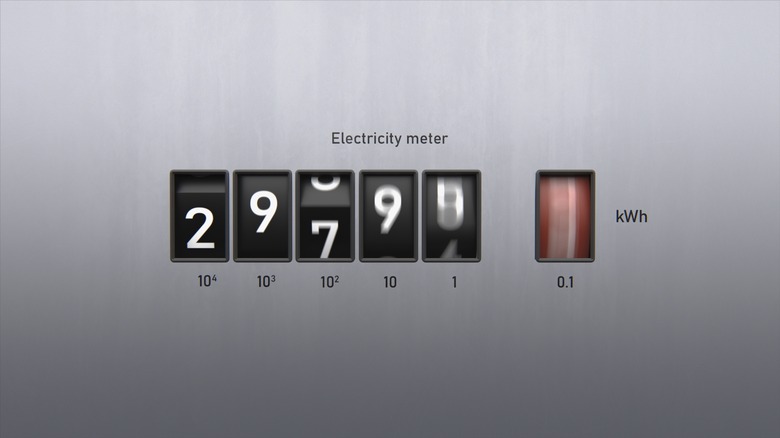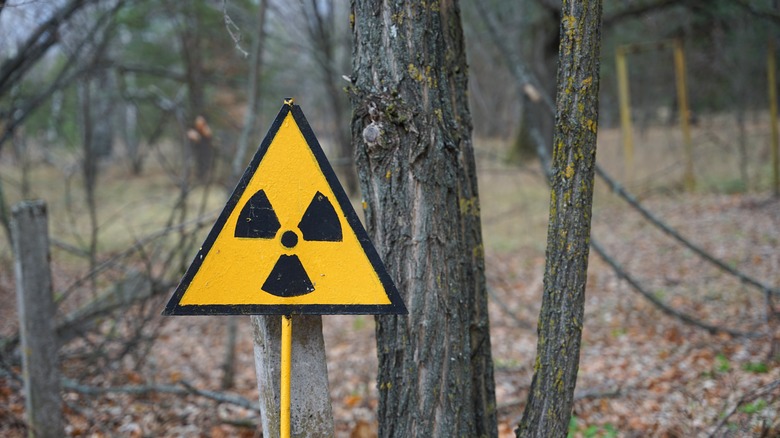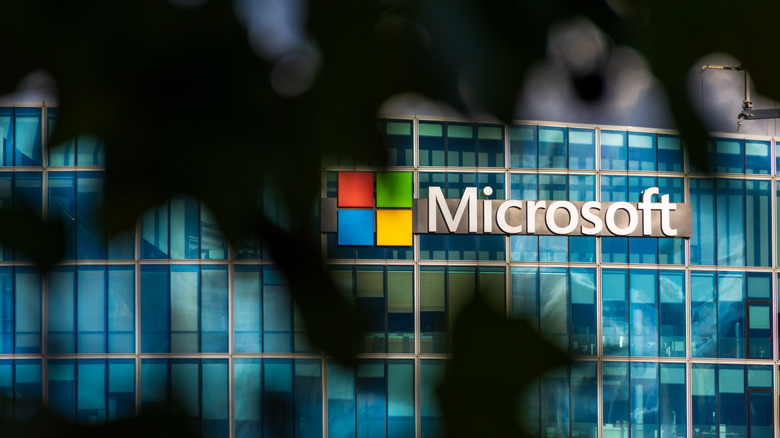How Microsoft's Nuclear-Powered AI Might Be The Future
In a world where artificial intelligence (AI) is increasingly becoming part of our lives, the price we have to pay for it is becoming even more apparent each year. While AI has been around for some time, the rise of generative AI products and services has changed the game at an exponential rate.
When used responsibly, AI helps push forward innovation and increase workforce productivity in several ways, from workflow tools to creating images or music. In tandem with robots, AI can also be used to help us conduct groundbreaking research or relieve us from boring household chores. In many ways, we've barely touched on all the ways that AI can be used to improve the way we live and work.
However, like other types of emerging technology, AI is a double-edged sword. Aside from the lack of existing regulatory frameworks and applications that go hand-in-hand with unethical AI use, such as deepfake technology, AI also has expanding uses for the military and surveillance.
While its applications are likely going to evolve even more with time, one thing is for sure: AI is here to stay. But at what cost? Although the verdict is still out on the actual impact of AI across industries, there is one very tangible, common denominator between all of them: the enormous, and still growing, amount of energy required to run it. Which could be why Microsoft has committed to the world's first nuclear fusion energy purchase agreement.
The rising energy requirements of AI
In 2023, the International Energy Agency (IEA) claimed that energy demand from data centers and data transmission networks accounted for up to 3% of global electricity use. However, with the rise of artificial intelligence, this number could spike in even more alarming ways.
In a Joule study, Alex De Vries, a PhD candidate from the VU Amsterdam School of Business and Economics, published his findings on the expected energy consumption of AI. In his assessment, the 1.5 million Nvidia AI server units expected to ship annually by 2027 to meet AI demand, running at full capacity, would consume at least 85.4 terawatt-hours (TWh) of electricity each year. In a statement to the BBC, de Vries reiterates, "You would be talking about the size of a country like the Netherlands in terms of electricity consumption. You're talking about half a percent of our total global electricity consumption."
Despite this, tech companies like Microsoft continue to double down on generative AI. However, it is reportedly doing so with more sustainability in mind. In January 2024, The Information reported on Microsoft's plans to develop cheaper, smaller AI models which use significantly less computing power. Aside from this, Microsoft is also looking at other ways to stay ahead of the generative AI game, including investing in the use of renewable energy to run it. In tandem with its existing plans to reduce its overall carbon footprint, one way that they're planning to make AI more sustainable is through nuclear technology.
How nuclear technology can fill the AI energy gap
These days, it's common to still associate nuclear technology with its military applications or the long-term effects of radiation after nuclear power plant accidents. Despite this, many people don't realize how nuclear power is already a large part of our daily lives.
According to the Office of Nuclear Energy, nuclear energy is the largest source of clean energy used by the U.S., providing 60% of all emissions-free power and 20% of electricity overall, — and it's the most reliable energy source on the grid, operating more than 92% of the time. Additionally, nuclear technology in various other forms has been used in everything from space exploration, medical diagnosis and treatment, agriculture, and even criminal investigation.
With the effects of climate change becoming harder to ignore, many countries and their populations have started changing their minds about the use of nuclear energy in general. For example, Sweden recently overturned its initial plans to phase out nuclear technology, and is investing in replacing its plants. Knowing this, it's no wonder that, among the many renewable energy options out there, Microsoft is betting that nuclear is a viable option.
In January 2020, Microsoft announced its plans to become carbon-negative by 2030. In its blog, Microsoft shared its aggressive program to cut its carbon emissions from its direct emissions, as well as its entire supply and value chain. Among its plans, it launched its $1 billion climate innovation fund. Years later, many of its plans are finally coming to fruition, such as those that include nuclear technology.
Microsoft moves toward nuclear energy investments
In its 2022 Environmental Sustainability Report, Microsoft confirmed that it has allocated over $600 million in impact investment capital from its climate innovation fund. At the time, Microsoft also entered into a strategic collaboration with TerraPraxis, wherein TerraPraxis plans to repurpose 2,400 coal-fired power plants to run on carbon-free energy. To do this, Microsoft shared that it planned to build and deploy tools that can help aid the regulatory approval process for decarbonizing coal facilities through advanced small modular nuclear reactors (SMRs).
A year later, Microsoft also sealed a deal with start-up Helion Energy. In May 2023, the Independent reported that Microsoft's partnership with Helion marks its first-ever deal with a nuclear fusion company. Backed by OpenAI's Sam Altman, Helion Energy uses nuclear fusion energy to extract electricity using high-efficiency pulses. With Helion's goal of generating 50 megawatts of energy by 2028, Bloomberg also shares that Microsoft intends to buy some of that power to reach its clean energy goals. As of February 2024, the Independent confirms that Helion Energy has begun preparing to build its first power plant, which uses nuclear fusion energy.
While the race to get ahead of the AI game is still ongoing, Microsoft's bid to stay on top without letting go of its commitment to going carbon-negative gives us hope that sustainability remains a priority for other tech giants hoping to remain competitive in the years to come.



